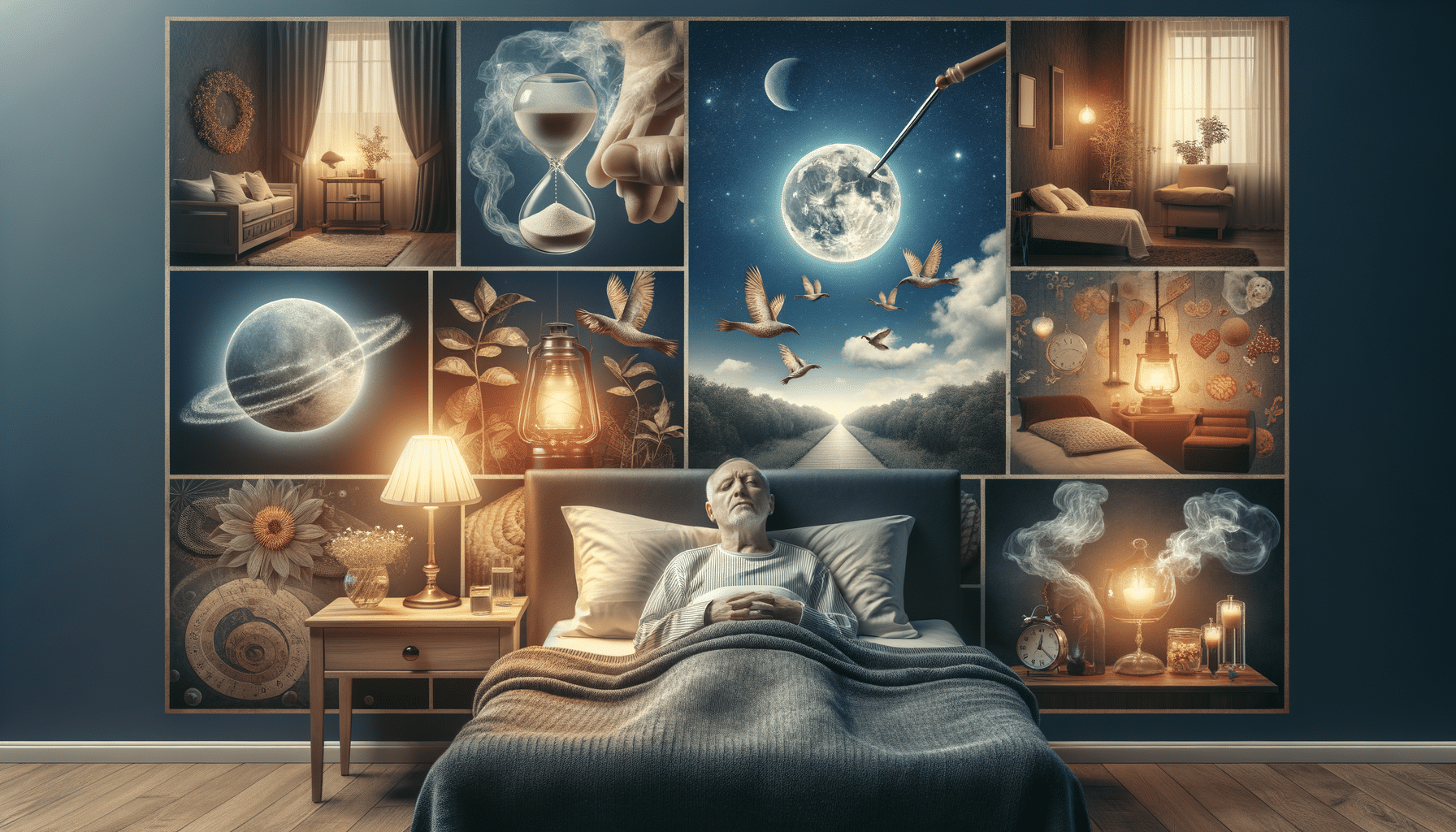Understanding Sleep Disorders in Seniors
As we age, sleep patterns change, often leading to sleep disorders that can significantly impact the quality of life. Understanding the root causes of these disorders is the first step in managing them effectively. Common sleep disorders among seniors include insomnia, sleep apnea, restless legs syndrome, and circadian rhythm disturbances. These conditions may arise due to a variety of factors such as medical conditions, medications, and lifestyle changes.
Insomnia, characterized by difficulty falling or staying asleep, is prevalent among older adults. It can result from chronic pain, anxiety, or depression. Sleep apnea, a condition where breathing repeatedly stops and starts during sleep, is another concern. It often goes undiagnosed but can lead to severe health issues if untreated. Restless legs syndrome, which causes uncomfortable sensations in the legs and an irresistible urge to move them, can disrupt sleep and lead to daytime fatigue.
Understanding these conditions is crucial as they not only affect sleep but can also exacerbate other health issues. Addressing sleep disorders in seniors requires a comprehensive approach that considers all potential contributing factors.
Identifying the Causes of Sleep Disorders
Identifying the underlying causes of sleep disorders in seniors is essential for effective treatment. Various factors can contribute to these disorders, including physical health conditions, mental health issues, and lifestyle habits.
Physical health conditions such as arthritis, heart disease, or diabetes can lead to discomfort or pain, making it difficult to sleep. Additionally, medications used to manage these conditions might have side effects that interfere with sleep. Mental health issues like anxiety and depression are also significant contributors to sleep disturbances. These conditions can create a cycle where poor sleep exacerbates mental health issues, which in turn further disrupts sleep.
Lifestyle factors, including diet, exercise, and sleep environment, play a crucial role. For instance, consuming caffeine or alcohol close to bedtime can impede sleep. Lack of physical activity can also contribute to sleep problems. Finally, an uncomfortable sleep environment, such as a noisy or bright bedroom, can prevent restful sleep.
By identifying and addressing these causes, seniors can improve their sleep quality and overall health.
Non-Medical Treatments for Sleep Disorders
Non-medical treatments are often the first line of defense against sleep disorders in seniors. These approaches focus on lifestyle changes and behavioral therapies that can enhance sleep quality without the side effects associated with medications.
One effective strategy is cognitive-behavioral therapy for insomnia (CBT-I), which helps individuals change thoughts and behaviors that disrupt sleep. This therapy has shown significant success in improving sleep patterns among older adults. Additionally, practicing good sleep hygiene is essential. This involves maintaining a regular sleep schedule, creating a comfortable sleep environment, and avoiding stimulating activities before bedtime.
Relaxation techniques such as meditation, deep breathing exercises, and progressive muscle relaxation can also promote better sleep. These methods help reduce stress and anxiety, which are common barriers to restful sleep. Engaging in regular physical activity during the day can further enhance sleep quality by promoting deeper and more restorative sleep.
These non-medical treatments can be highly effective in managing sleep disorders, offering seniors a path to better sleep without relying on medication.
Medical Treatments and Interventions
When non-medical treatments are insufficient, medical interventions may be necessary to manage sleep disorders in seniors. These treatments should always be guided by a healthcare professional to ensure safety and effectiveness.
Medications such as sleep aids or sedatives may be prescribed for short-term use to help manage insomnia. However, these should be used with caution due to potential side effects and the risk of dependency. For sleep apnea, continuous positive airway pressure (CPAP) therapy is a common and effective treatment. This involves wearing a mask during sleep that keeps the airways open, reducing apnea episodes.
In some cases, addressing underlying health conditions can improve sleep. For example, managing chronic pain with appropriate medication or therapy can alleviate sleep disturbances. Adjusting medications that may interfere with sleep is another strategy. Consulting with a healthcare provider can help identify the most appropriate medical interventions for each individual.
While medical treatments can be beneficial, they should be part of a broader, comprehensive approach to managing sleep disorders.
Creating a Sleep-Friendly Environment
Creating a conducive sleep environment is a crucial aspect of managing sleep disorders in seniors. A well-designed sleep space can significantly enhance the quality of sleep and overall well-being.
First, ensure that the bedroom is quiet, dark, and cool. Consider using blackout curtains to block out light and earplugs or a white noise machine to minimize noise disruptions. A comfortable mattress and pillows are also essential for promoting restful sleep.
Eliminating distractions such as electronic devices can help maintain a sleep-friendly environment. The blue light emitted by screens can interfere with the body’s natural sleep-wake cycle, making it harder to fall asleep. Encourage the use of dim lighting in the evening to signal to the body that it’s time to wind down.
Incorporating calming elements like soothing scents or gentle music can further enhance the sleep environment. Establishing a bedtime routine that includes relaxing activities such as reading or taking a warm bath can signal to the body that it’s time to prepare for sleep.
By creating a sleep-friendly environment, seniors can improve their sleep quality and enjoy more restful nights.




Leave a Reply